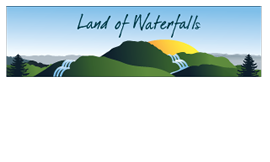Spring houses were
an important building on farms, large and small, in the past. First, they protected the clean water supply
from debris and animals. Second, they
provided natural refrigeration for meats, fruit, vegetables, milk, butter,
cheese and other products that spoiled easily during hot weather.
 |
| A dry-stacked fieldstone wall retains the bank
next to a large poured concrete spring box. |
Rock, stone or
concrete was used to line a natural spring or the water source was diverted to
a suitable location where the spring house could be built. Spring houses were often built into a bank or
hillside in a shady location. Larger
spring houses may have had shelves, either of wood or stone, built into the
walls.
Because they
were constructed of stone rather than wood, spring houses have often survived long after other farm buildings disappered.
 |
| Small spring box. |
The most basic
versions were a spring box built of stone around the water source and covered
with a flat stone, concrete slab, tin or even wood. Sometimes water was diverted or pumped to a
concrete trough on a back or side porch.
Items were placed in the trough to stay cool.
 |
| 1859 spring house of dry-stack field stone. |
Possibly one of
the oldest and finest spring houses in Transylvania County has the date “1859”
carved in the stone lintel
above its wood frame doorway. The spring house is constructed of
dry-stacked
flat field stones that are mortared on the interior. It has two louvered windows and a tin
roof. A trough running through the
center is lined with flat rocks paving the floor on either side. The water exited through a small hole at the
back of the building. There is also a
large stone enclosure around the front of the building that appears to have had
a roof at one time.
 |
| Spring tub created from an old bathtub. |
One of the more
interesting is a spring trough inside a smokehouse. River rock was used to face an old iron bathtub
mostly inside the smokehouse. A portion
of the spring trough/tub projects through the exterior wall. From the outside the tub faucets are visible,
although the water comes from a spigot and pipe running down the side of the
building.
The
architectural survey of Transylvania County conducted in 1990 identified
approximately 30 spring houses. It’s
certain there are many more scattered across the county.
The
architectural survey files are available in the Local History Room at the
Library. Copies of Transylvania: the Architectural History of a Mountain County
are still available at the county’s Planning and Community Development
department.
Photographs and
information for this column are provided by the Rowell Bosse North Carolina
Room, Transylvania County Library. Visit
the NC Room during regular library hours (Monday-Friday) to learn more about
our history and see additional photographs.
For more information, comments or suggestions contact Marcy at [email protected]
or 828-884-3151 X242.



